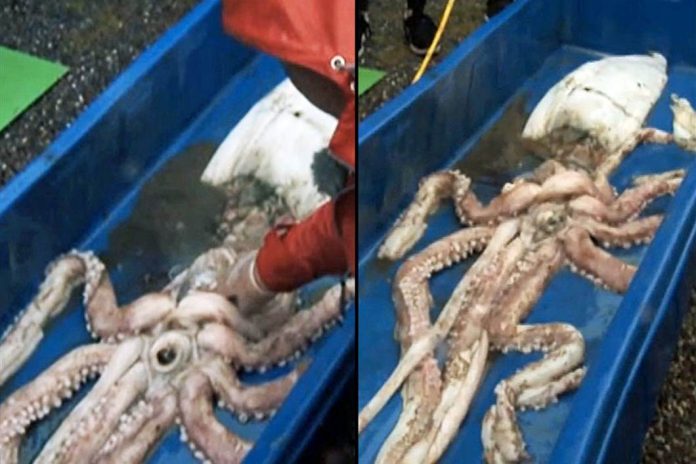Rare giant squid caught off the coast of Dingle to be brought to Natural History Museum.
The 5.8m (19′) squid was caught by the crew of the fishing vessel Cú na Mara during a trawl on the Porcupine Bank, 120 miles west of Dingle.
Marine biologist Kevin Flannery has said the landing of giant squid in Ireland is extremely rare.
Only five specimens have been recorded since records began almost 350 years ago.
The very first giant squid recorded in Ireland was also landed in Dingle, when fishermen brought one ashore in 1673.
The giant squid (Architeutis) is a deep-ocean living creature, rarely seen by humans, and can grow to a length of over 12m.
The giant squid is currently at the Dingle Aquarium where it is being dissected and studied by US marine science students from Sacred Heart University, Connecticut, who are spending a semester studying in Dingle.
Giant squid, along with their cousin, the colossal squid, have the largest eyes in the animal kingdom, measuring some 10 inches (25 centimeters) in diameter. These massive organs allow them to detect objects in the lightless depths where most other animals would see nothing.
Like other squid species, they have eight arms and two longer feeding tentacles that help them bring food to their beak-like mouths. Their diet likely consists of fish, shrimp, and other squid, and some suggest they might even attack and eat small whales.
They maneuver their massive bodies with fins that seem diminutive for their size. They use their funnel as a propulsion system, drawing water into the mantle, or main part of the body, and forcing it out the back.
Scientists don’t know enough about these beasts to say for sure what their range is, but giant squid carcasses have been found in all of the world’s oceans.















